We take a deep dive into the history, function and legacy of the StG 44, the progenitor of the modern combat rifle.
Thanks to the mainstream media, many people falsely equate assault rifles with the AR-15, even going so far as to believe that “AR” stands for “assault rifle” rather than “ArmaLite Rifle.” These individuals also tend to think that the AR-15 is a much newer design than it is. These people would likely be surprised to find out that the term “assault rifle” as well as the fundamental concept both originate with the StG 44.
StG 44 stands for Sturmgewehr 44, and the literal translation of Sturmgewehr is “Storm Rifle”, although “storm” is in the context of military maneuvers rather than weather phenomena. Hitler is given credit for naming the Sturmgewehr, a name that undoubtedly was an attempt at striking fear in enemy soldiers while boosting the morale of German ones.
Regardless of how effective that aspect of the firearm was, the StG 44 was immediately recognized in the field for its qualities as an excellent fighting weapon. It was such a revolutionary design that it would go on to influence countless post-war rifle designs including the extremely prolific AR-15 and AK platforms.
How did the Germans come up with such a radical concept? How did it function and fare in actual combat? What designs would the StG 44 go on to influence? Here we’ll discuss all of that and much more.
StG 44 Specs
Cartridge: 8mm Kurz
Action: Gas-operated long-stroke piston w/ tilting bolt ; select-fire
Capacity: 30-round detachable magazine
Barrel Length: 16.5 inches
Weight: 10.125 pounds unloaded
Overall Length: 37 inches
Sights: Adjustable rear notch and hooded front post ; provision to mount optics
WWII German War Machine
Today, the concept of the intermediate cartridge, select-fire military carbine seems obvious, but it wasn’t always. Keep in mind, most of the top brass of WWI needed a lot of convincing before they accepted that submachine guns were a good idea, too. The development of the StG 44 follows a similar trajectory.
The main infantry rifle for the German Army in WWII was the Karabiner 98k, a manually operated bolt-action rifle that was effective out to 500 meters. Warfare changed, however, and during WWII close quarters combat became much more frequently encountered in the bombed-out streets of Europe.
The 98k was long, heavy and bulky to maneuver with, as is true with any rifle of that style, and its cartridge was more powerful than it needed to be. The semi-automatic Gewehr 43, also chambered for 8mm Mauser, offered better firepower but it was still cumbersome to fight with.

The downsides of long and heavy combat rifles were obvious, and the obvious solution to them was the use of submachine guns. SMGs were excellent weapons in close-range, urban environments and offered a lot of firepower.
The MP 40 or Maschinenpistole 40 (Machine pistol 40) was a lightweight, compact submachine gun chambered in the 9x19mm Luger handgun cartridge with a 32-round magazine capacity. It was used effectively by German troops during WWII, but just like any submachine gun, the MP 40’s weaknesses were range and power.
What the German Army soon realized, especially on the Eastern Front, was that there was a hole to fill between the K98k and the MP 40. They saw the need for an intermediate cartridge, one that could reach out to longer ranges like 8mm Mauser but was still easy to control in full-auto like 9mm Luger.
The solution was the development of a new cartridge as well as the StG 44 to go along with it.
Rise of the Assault Rifle
The Maschinenkarabiner (Machine carbine) 1942, or MKb 42, was the designation given to the new class of rifle to differentiate it from full-power rifles and submachine guns. Two German firearms manufacturers were tapped to each produce a prototype, Walther and Haenel.
Walther came up with the MKb 42 (W) and Haenel’s was called the MKb 42 (H). The primary difference between the two rifles was the Haenel used a tilting bolt while the Walther used a rotating bolt, but both used a long-stroke gas piston above the barrel to operate the bolt mechanism. The Heanel was determined to be the better design and was chosen for combat trials and further development.
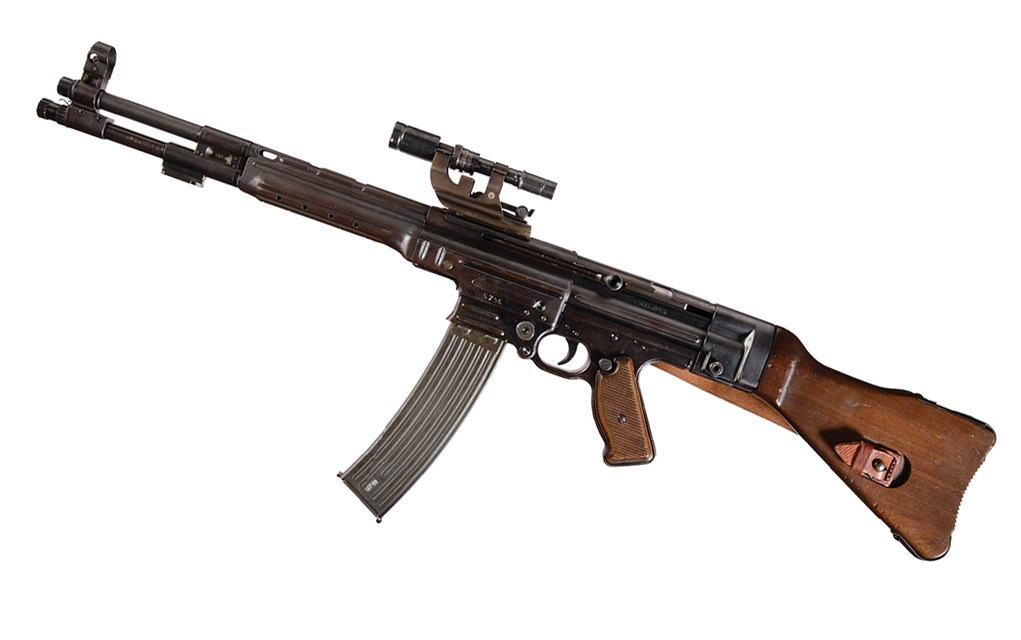

It’s believed that some of the very first MKb 42 (H) prototypes were airdropped outside Leningrad for testing by German troops on the Eastern Front. It was officially adopted into service in early 1943 and about 8,000 to 12,000 guns were made in total before production ended.
Before we talk about how the MKb 42 (H) evolved into the StG 44, we should talk about how the final gun almost never came to fruition.
Hitler Gets Pissed
No less than three times Hitler nixed the development of what was to become the StG 44. In April of 1942, the German Army General Staff was excited to tell Hitler about the MKb 42, especially how it performed in combat trials.
The General Staff envisioned all German troops trading their K98k bolt-actions and MP 40 submachine guns for MKb 42 carbines. Hitler was uninterested and unenthused. The development of a new rifle and new ammunition type would utilize too much time and resources and was not part of his plan.
Germany already had enormous stockpiles of 8mm Mauser ammo and Hitler questioned why they would adopt a new rifle that could not use the ammunition they had on hand. The German Army brass was dejected but nonetheless continued developing the MKb 42 behind Hitler’s back.
The workaround was to rename the MKb 42 to the MP 43 (Maschinenpistole 43, or Machine Pistol 43). Hitler was jazzed about new submachine guns, which is what he thought he was signing off on, but it was really just the MKb 42 under a new name. The General Staff continued development on MP 43, which by now was the Heanel design, and prepared another formal presentation to Hitler.
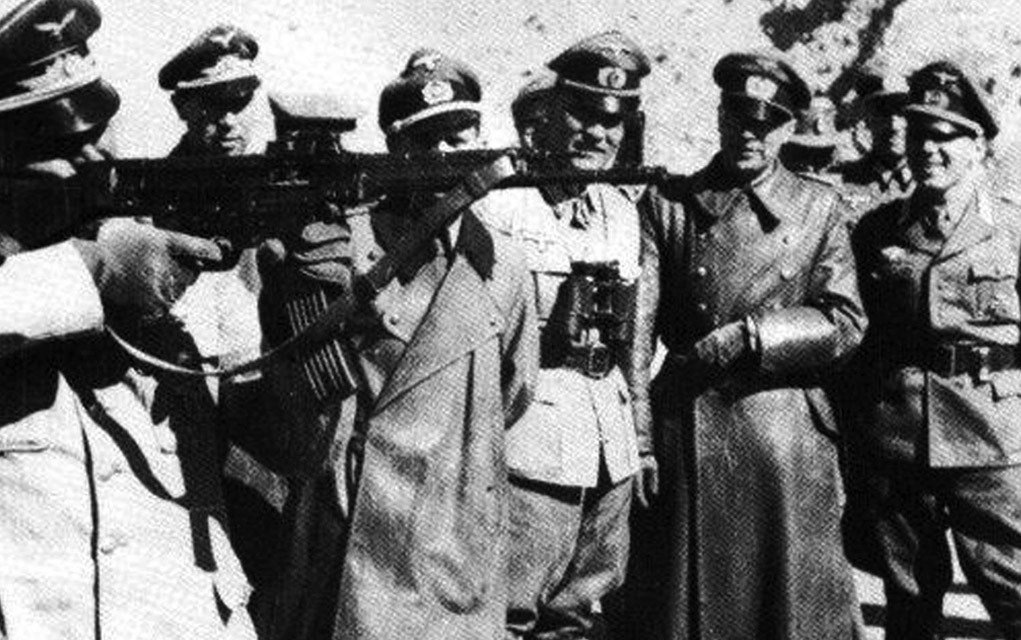

Hitler rejected the idea again and reminded the General Staff he’d already dismissed the idea. In early 1943, the General Staff made one last attempt to sway Hitler and receive approval to commence production. This was the third time Hitler said no to the project and he was growing angry at his staff for not listening to his orders. The Army brass explained that an order for the rifle had already been placed and that production had started. Hitler resentfully acquiesced and said to produce the initial run, then stop.
By January of 1944, however, Hitler had an epiphany and changed his mind. He wanted two divisions in Russia equipped with the MP 43 for more combat testing.
Behind the scenes, it may have been Henrich Himmler, Hitler’s lead for the Gestapo and Waffen-SS, who convinced Hitler that the MP 43 was a good weapon system to pursue further. The first batch of MP 43s went to the Waffen SS and it seems Himmler listened to what his ground troops said. They liked the new rifle, so more MP 43s were sent to troops on the Eastern Front to fight the Russians.
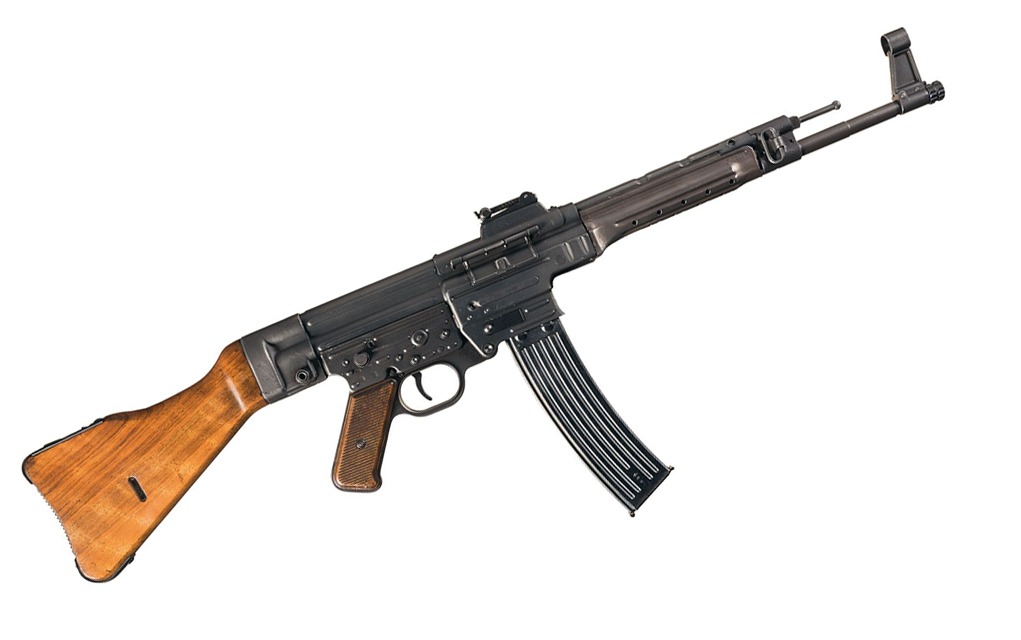

A few very minor modifications were made to the MP 43, and the updated design was renamed the MP 44. The story goes that after seeing the MP 44 demonstrated, Hitler decided to change the name of this impressive new weapon to the Sturmgewehr. The gun was then formally designated as the StG 44 and marked the introduction of the term assault rifle to our lexicon.
StG 44 Design And Manufacture
It might sound strange the German toy industry had an impact on the design of the first assault rifle, but Germany had extensive experience with stamped steel to make children’s toys. In wartime, resource-poor Germany, using stamped steel was more cost-effective than machining rifles from expensive high-strength steel and other alloys.
Many manufacturing techniques we take for granted today were revolutionary during WWII. Stamped steel was less expensive than machined steel and took less time to produce, and it resulted in lighter guns as well.
For the StG 44, it made sense to use stamped steel for parts that didn’t need to be as robust such as the receiver, trigger group and handguard, but other components that received the brunt of the pressure from firing a cartridge like the barrel and bolt were still made from machined parts.
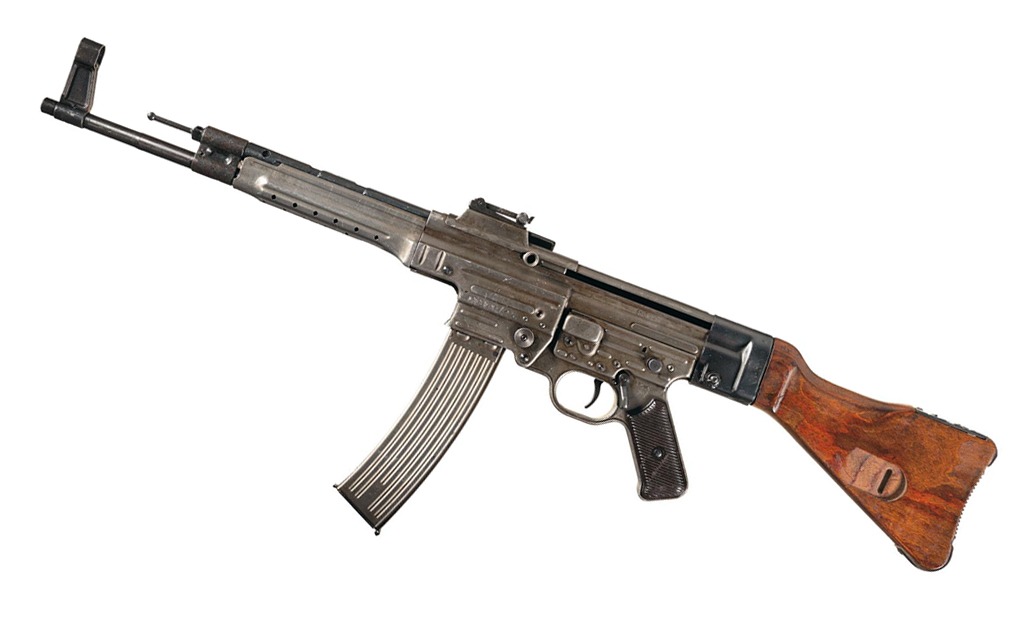

The use of stamped steel was unique for a military rifle at this time, but that wasn’t the only distinct characteristic of the StG 44. It also notably used an inline stock to reduce recoil, sights that were elevated above the bore axis, a pistol grip and detachable 30-round magazines.
The stock was wood, the sights were a rear notch adjustable up to 800 meters (though its maximum effective range was realistically less than 500 meters) and a tapered post front sight under a protective hood. The rifle was equipped with a 16.5-inch barrel with a threaded muzzle for rifle grenade launchers or other muzzle devices. The ejection port on the right side of the rifle sported a dust cover, though the left side was left open where the charging handle reciprocates.
The StG 44’s controls consisted of a thumb-operated safety selector on the left side of the pistol grip along with a large round magazine release button near the magazine well. The reason the magazine release was on the left side was so a right-handed shooter could hold the magazine while pressing the release so he could retain the magazine. Unlike today where magazines in war are often treated as disposable, metal and manufacturing were more expensive for all sides during WWII, so soldiers were expected to retain and reuse their detachable mags.
The fire selector was a push-button that could be pressed back and forth into the trigger group. On the left side an “E” would appear for Einzel (semi-auto), and when protruding from the opposite side a “D” appears for Dauerfeuer (full auto). In action, however, soldiers were instructed to primarily use the guns in semi-auto only and to only fire short bursts in full-auto if the situation necessitated it. Further, while the magazine capacity was officially 30 rounds, the doctrine was to only load 25 rounds to increase the longevity of the spring.
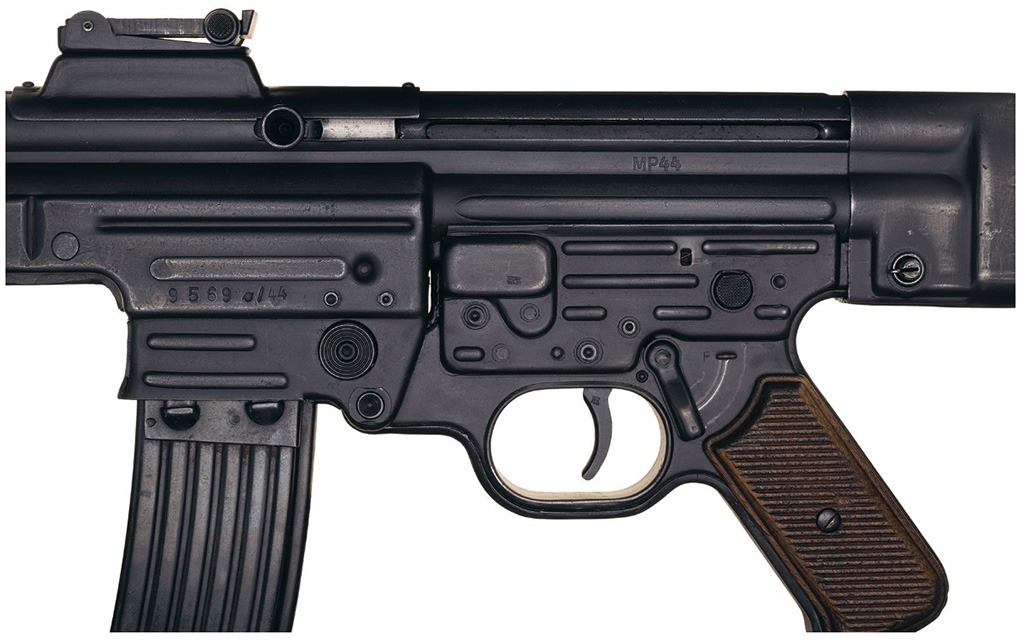

The tilting bolt mechanism does exactly as it sounds, tilting up as the piston and bolt move rearward. As the bolt moves forward via a recoil spring in the stock, the bolt tilts down and locks back up to fire.
Disassembly is simple and fast. One pin holds the stock to the rear of the receiver. Remove the pin and you can pull the stock and recoil spring from the receiver. The trigger group can then be pivoted down from the receiver for cleaning and the bolt and bolt carrier can be pulled out from the rear of the receiver. AK rifles are often compared to the StG 44, but when disassembling a Sturmgewehr, it starts to look a lot more like an AR-15.
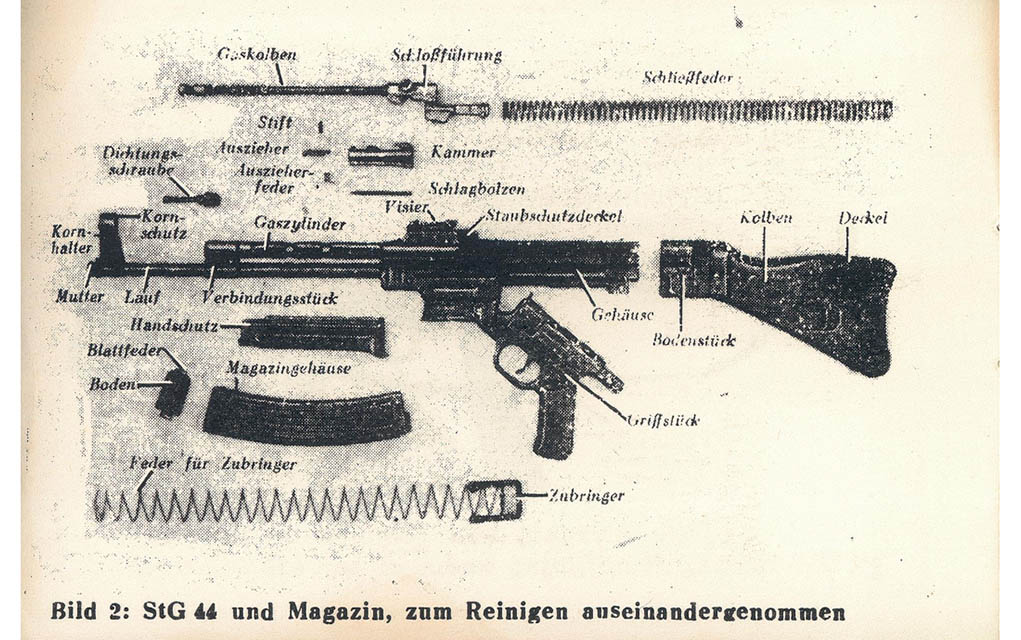

8mm Kurz
The development of the StG 44 is entwined with the development of 7.92x33mm Kurz, commonly known as 7.9mm Kurz or 8mm Kurz. It’s a bottleneck intermediate cartridge that splits the difference in power between the 8mm Mauser rifle cartridge and the 9mm pistol cartridge.
Kurz is the German word for “short”, and that’s exactly what it was, a short version of 8mm Mauser. It used the same case as the full-power 8mm Mauser rifle cartridge, but the case length was substantially shortened and more tapered for increased reliability. The bullet was the same diameter but was lighter at 125 grains compared to the parent case’s 198-grain projectile. The obvious result was less felt recoil which allowed more accurate and controllable full-auto fire, but the new cartridge was also significantly lighter than 8mm Mauser which allowed soldiers to carry much more of it.
An StG 44 shoots a 125-grain 8mm Kurz bullet at about 2,250 fps out of its 16.5-inch barrel. To put its ballistic potential into a bit more modern context, an AKM shoots a 123-grain 7.62×39 bullet at about 2,400 fps out of its 16.3-inch barrel. This makes the StG 44 just slightly weaker than an AK in terms of muzzle energy with a difference of about 168 foot-pounds (1,573 foot-pounds for an AKM versus 1,405 foot-pounds for the StG).
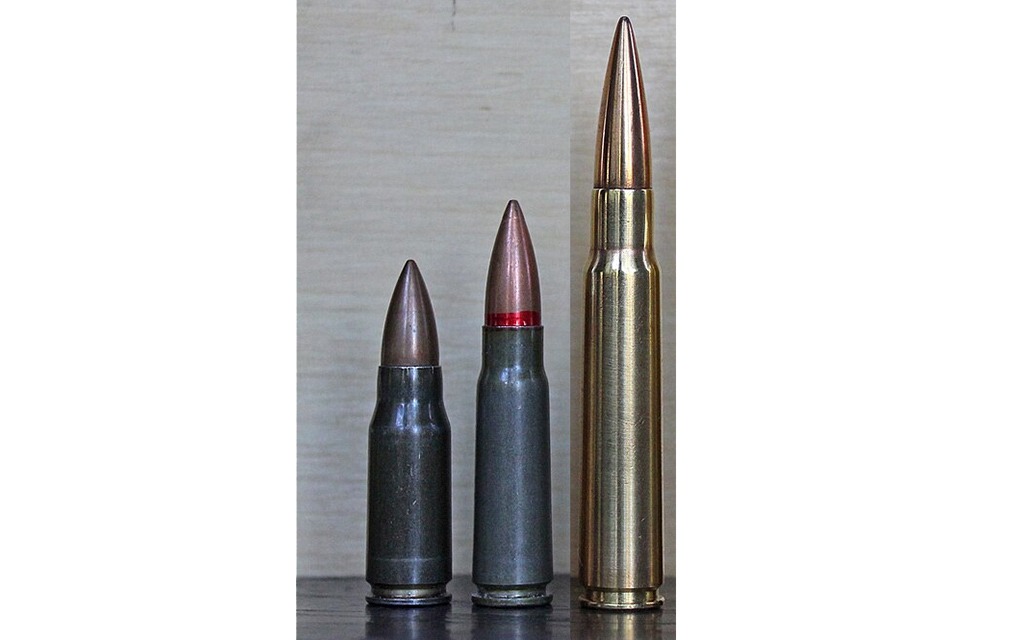

Since there was a shortage of brass in Germany during the war, all 8mm Kurz cartridges were produced with steel cases. When the StG 44 finally was given the green light, production of 9mm ammunition was reduced so more of the new 8mm Kurz ammo could be manufactured. Bullets used a mild steel core since lead was also in short supply, but this was common for all military ammunition manufactured in Germany during WWII.
The StG 44 After The War
The end of WWII did not mark the end of the StG 44 being issued or seeing combat. Following the Soviet occupation of Germany, the East German Nationale Volksarmee (National People’s Army) used them until they were replaced with Kalashnikovs in the mid-1960s. Some smaller, specialized units in countries like France, Yugoslavia and Czechoslovakia used them for a period as well.
In the decades that followed WWII, caches of old StG 44s would continue to trade hands and see combat in places like Vietnam and Libya, and even more recently the wars in Syria and Ukraine. Given how far and wide these guns were proliferated, they’ll almost certainly be seen in future conflicts as well.
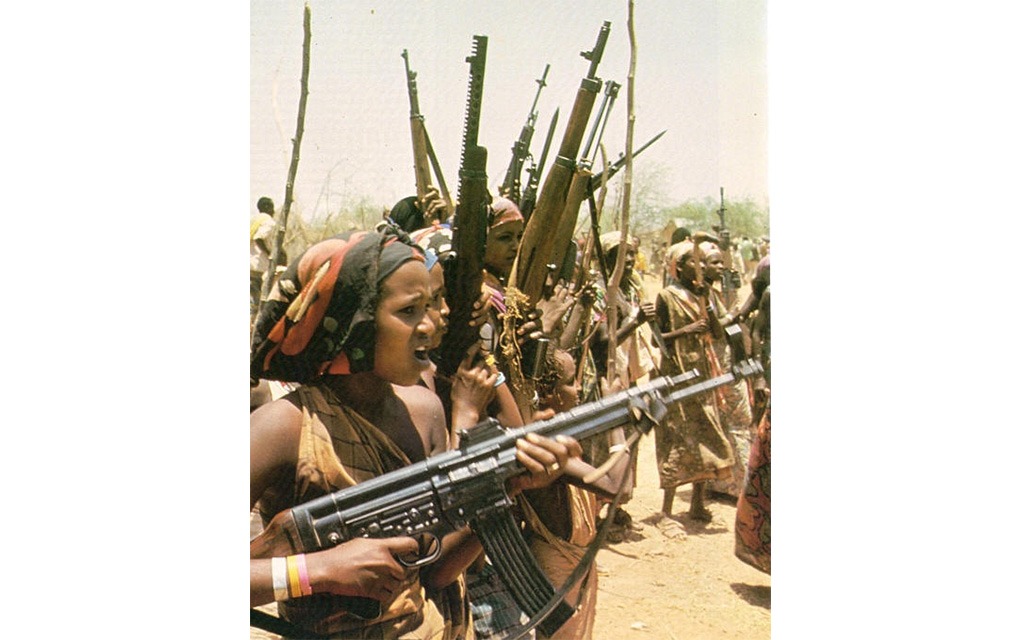

The longer-lasting legacy of the StG 44 is found in the massive impact it had on all military small arms designs that came after it, most notably the use of intermediate-power cartridges.
The Soviets immediately used 8mm Kurz for inspiration and came up with 7.62×39 and a new family of weapons to fire it. Some aspects of the Kalashnikov specifically were also certainly influenced by the StG, namely its gas system, 30-round detachable magazines and extensive use of stamped steel.
The AR-10, and by extension, the AR-15, also took great inspiration from some of the StG 44’s smarter features such as its in-line stock and its pivoting, hinged receiver.
The CETME/H&K G3 can also be considered a direct descendant of the StG 44, as the design came from the same German Mauser engineers who were working on refining the StG at the end of WWII. After Germany’s defeat, they continued their work in France and Spain which resulted in the CETME, the G3 and therefore the MP5 and HK33 as well.
No matter how you look at it, the StG 44 changed firearms design forever.
Owning An StG 44 Today
Given that all original StG 44s are select-fire machine guns, very few of us will ever be able to own one due to the very high cost. If you want one but don’t have $30,000 or more to spend on it, you’re going to have to compromise.
The next best thing is a semi-auto clone, but these are very expensive as well.
Sport-Systeme Dittrich in Germany makes them, and some years back PTR imported 200 of them to sell under the name PTR44. Given the low import numbers, these have been extremely desirable ever since and have sold for more than $10,000 on the second-hand market. The good news, however, is that Sport-Systeme Dittrich has recently set up shop under the name D-K Production group to make these Stateside too. The bad news is that the new production ones still have an MSRP of $6,200. If you want a semi-auto StG 44 that’s as close to the real thing as possible, this is as little as you can pay for one.
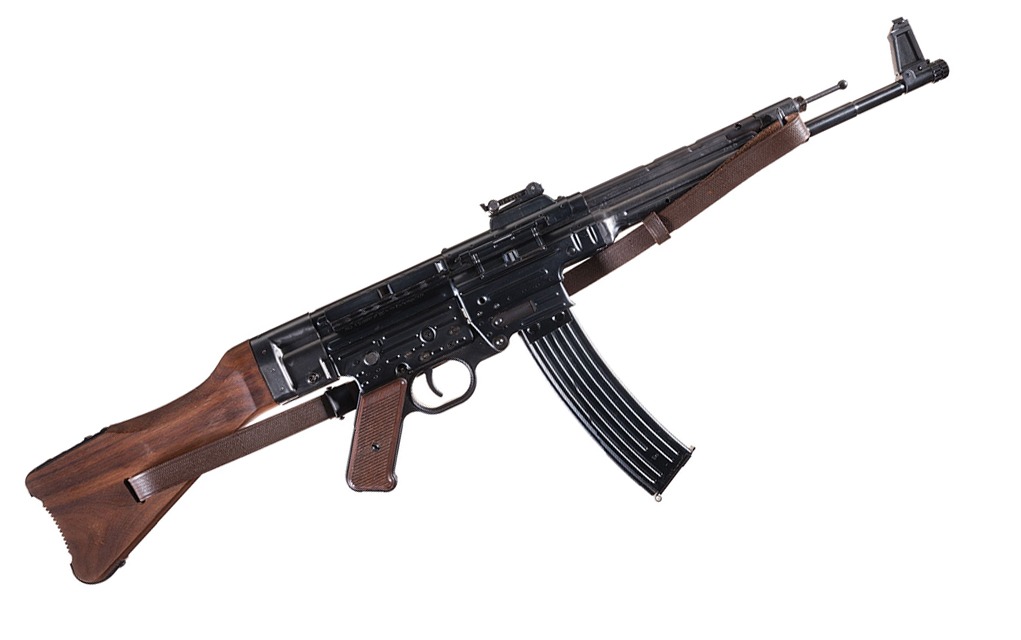

Palmetto State Armory was also teasing an StG 44 reproduction, a continuation of the Hill & Mac Gunworks project, but the company unfortunately announced that they ran into development problems and have put it on hold for the time being. Hopefully, PSA will come back to it in the future, as their plan to offer the gun in modern chamberings besides the original 8mm Kurz was very appealing.
For those looking for a more reasonably priced Sturmgewehr, you’re going to have to settle for a .22 LR version like the Blue Line Solutions/Mauser model. It’s not a perfect clone by any means, and .22 LR semi-autos are known for having mixed reliability, but the guns definitely look like StG 44s and are readily available for about $450.
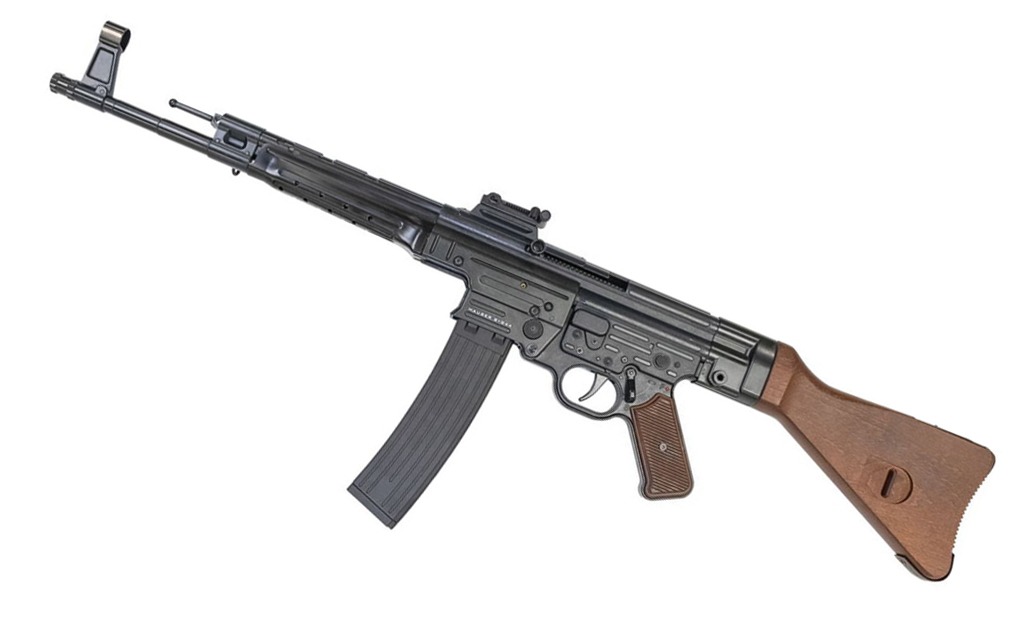

.22 LR StG 44 Deals
| Palmetto State Armory | $434.99 |   |
| Sportsman’s Warehouse | $509.99 |   |
More On Historical Military Rifles:
- SKS: Collecting & Identifying The Simonov
- All About The Mosin Nagant
- Fusil Automatique Leger: Everything You Want To Know About The FN FAL
- Lee Enfield: The Right Arm Of The Empire
- The Rise And Fall Of The AR-10
- The M1 Garand: America’s Original Battle Rifle


Next Step: Get your FREE Printable Target Pack
Enhance your shooting precision with our 62 MOA Targets, perfect for rifles and handguns. Crafted in collaboration with Storm Tactical for accuracy and versatility.
Subscribe to the Gun Digest email newsletter and get your downloadable target pack sent straight to your inbox. Stay updated with the latest firearms info in the industry.
Read the full article here




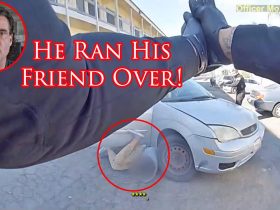
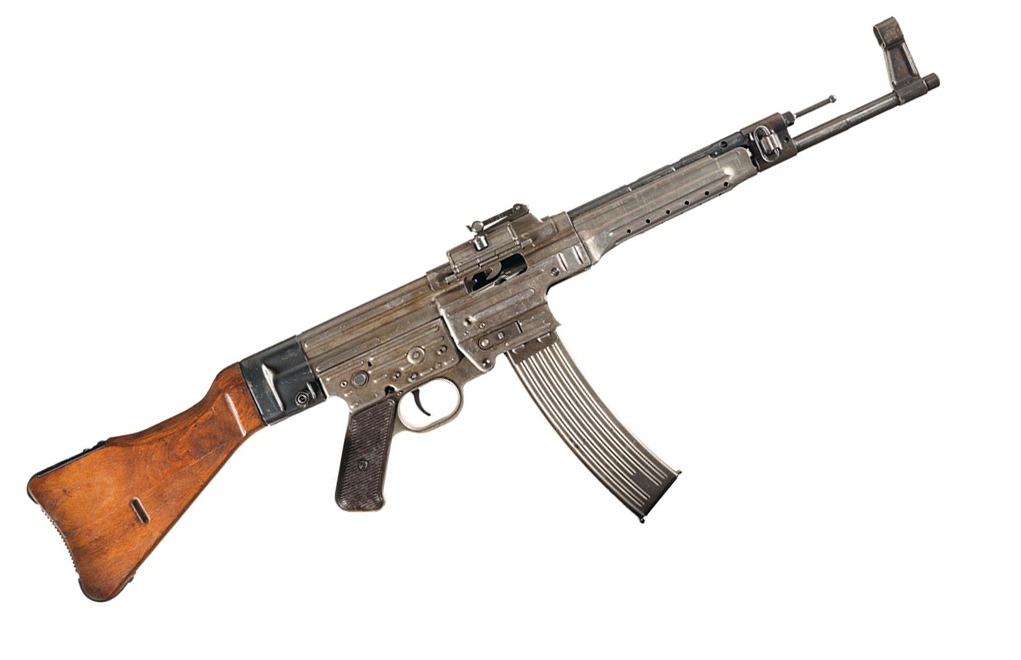


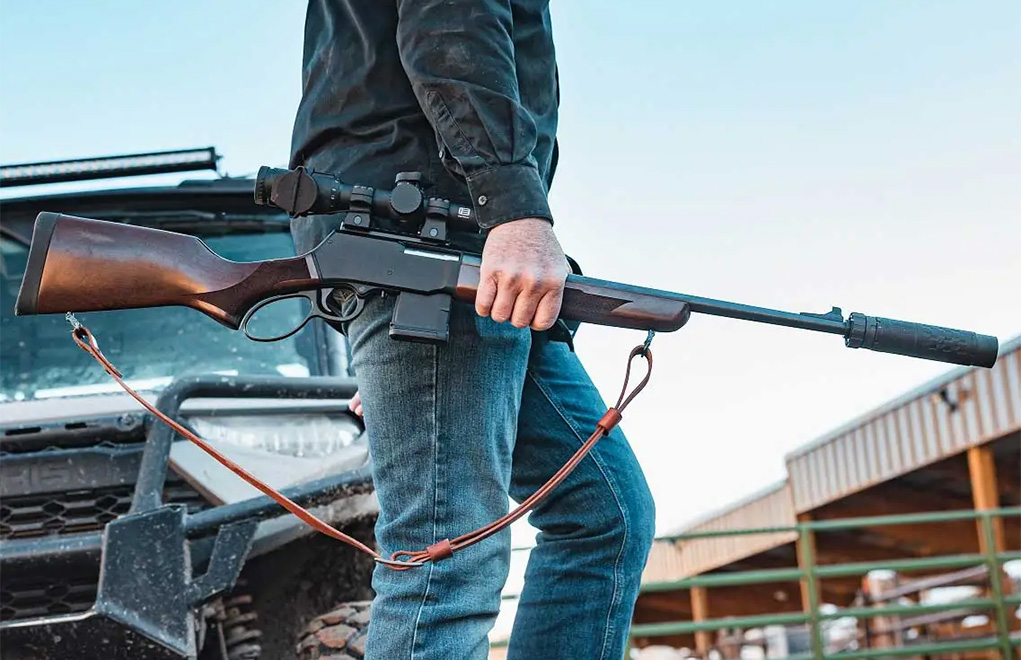


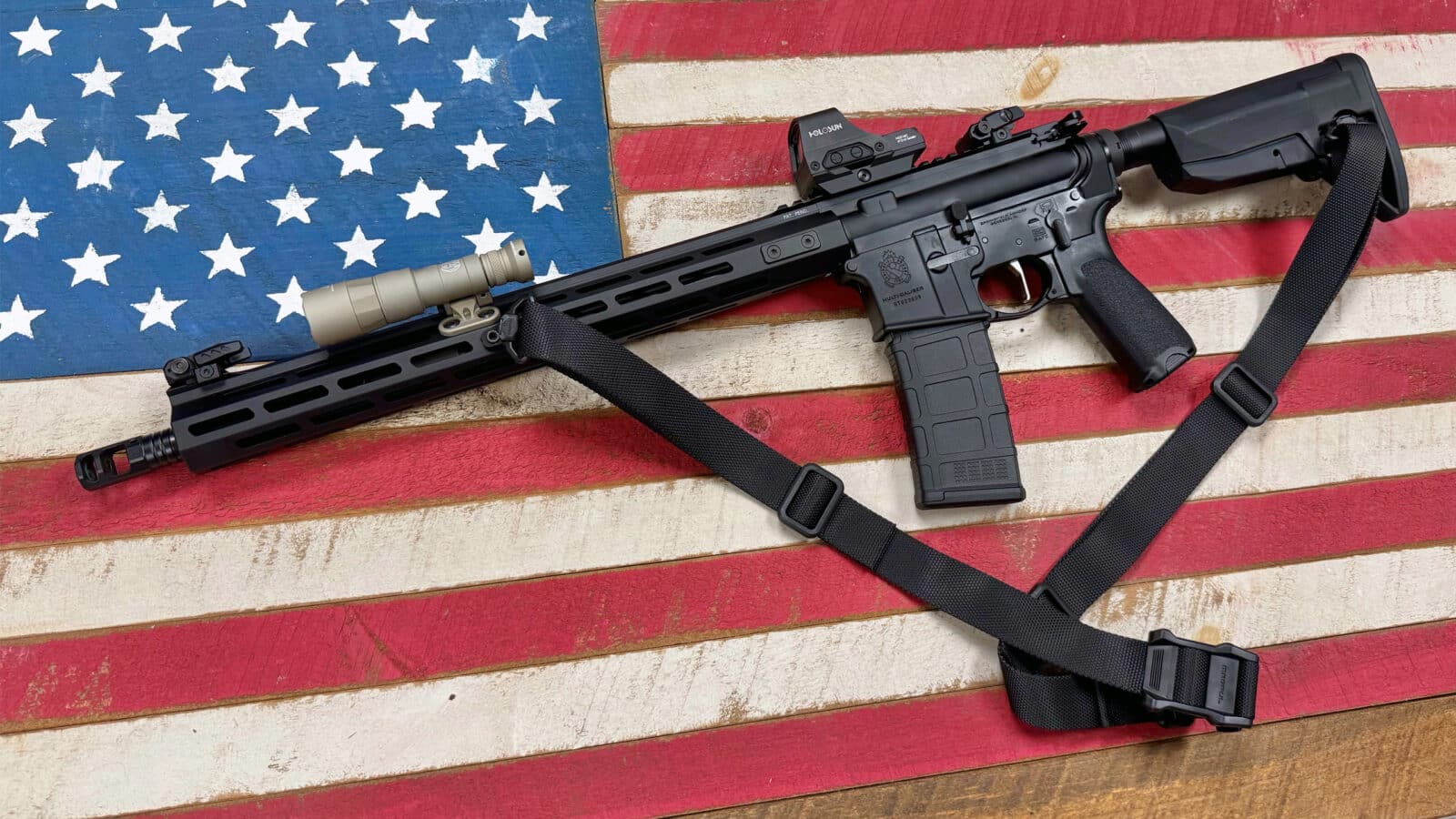


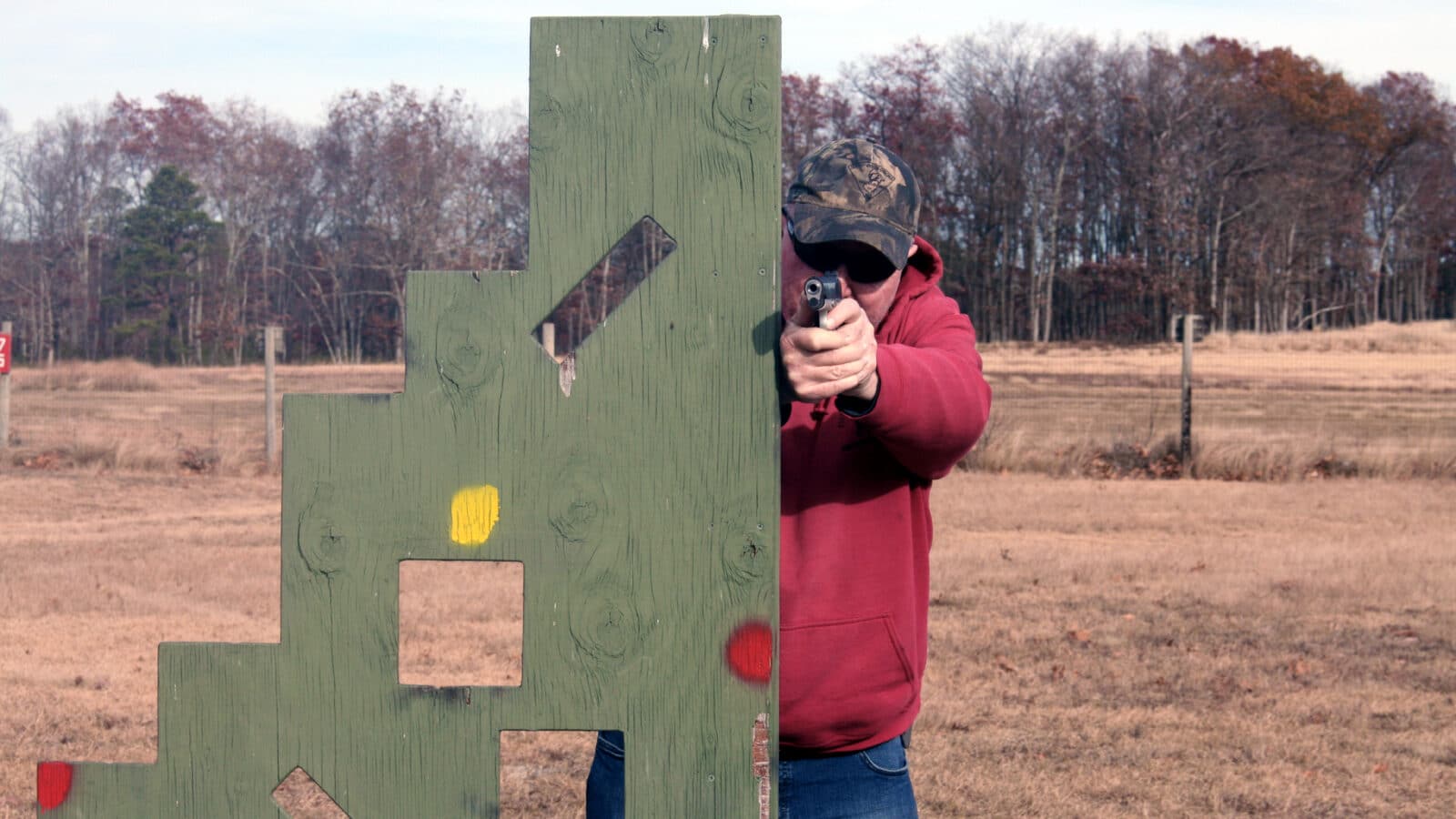



Leave a Reply